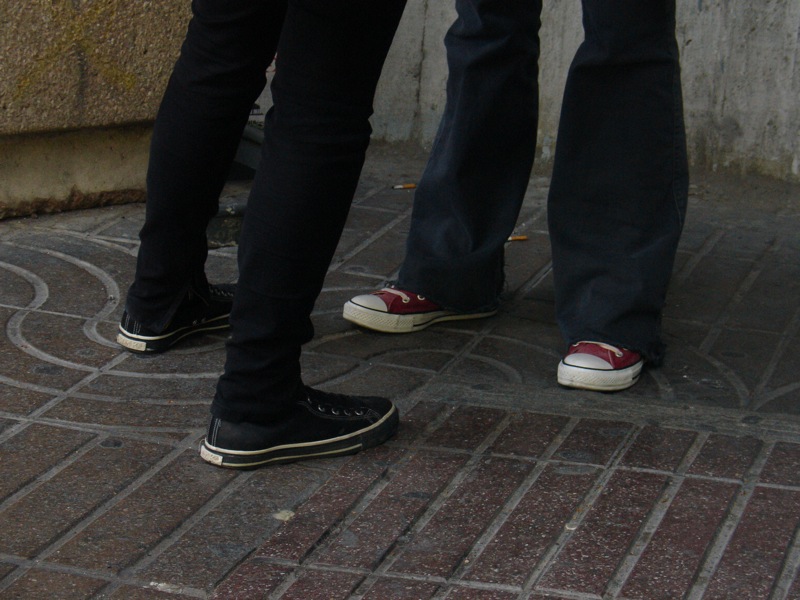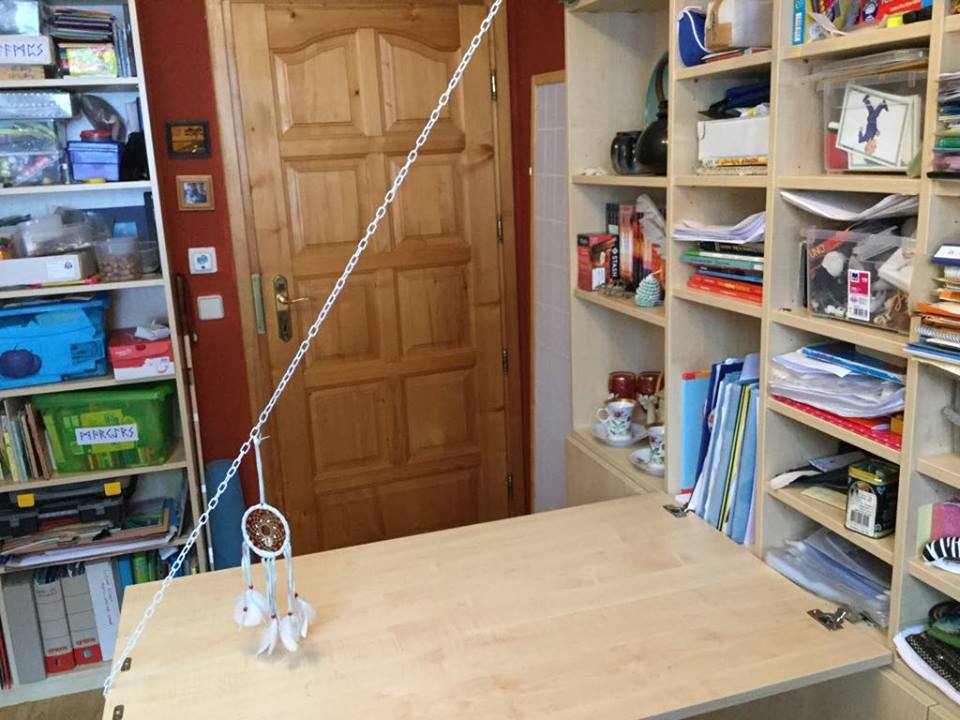Courage from wherever you stand
/If there is one thing I wish I could give my readers these days it is the feeling that the climate crisis is like a war.
For some it is easy to see it as a war of us against them—us, the ordinary people who mostly want to do something about it, against them, the greedy one-percenters who run most of the industry and make most of the political decisions. But it isn’t at its core an us-versus-them war.
It’s an us-versus-ignorance war. Slowly the ignorance is falling away and we will focus more and more on fighting to mitigate the collapse of our ecological life-support system. But still it will be an us-versus-ignorance war. It will just be against the effects created by the ignorance of the past.
Even the wealthy have to eat and even if they may have bunkers, there is no possible future in which climate collapse goes forward unchecked and they don’t seriously regret not paying attention earlier. It is still primarily about ignorance. “Ignor-ance” has its roots in willfully ignoring and denying reality. That is what we are up against—the denial ignorance of the wealthy, the misled ignorance of the poor and the despairing and apathetic ignorance of everyone in between.
Image by Arie Farnam
Plenty of people are saying that we need to respond to the climate crisis the way we responded to World War Two. It’s true on so many levels. The climate emergency is already claiming hundreds of thousands of lives and it will soon claim millions and then billions, if we do nothing. The scale is at least as massive as the second world war was and it will reach into every person’s life just as that war did. It will require many personal sacrifices, political focus, economic manipulation and social solidarity, just as that war did.
It already requires a great deal of courage.
Of course, there is the courage of people protesting and putting their bodies in the way of fossil fuel extraction, processing and transport. There are the people chained or glued to government or corporate doorways. There are those sitting down in front of police wielding chemical weapons and people standing in the middle of intersections, demanding that other humans do indeed stop business as usual, stop driving, pay attention and treat science as a real-world matter.
Some people look at these protesters, often dressed up or in a excited, bonded group, and assume it must be fun or they must be in it for the adventure. And there may be some who are in it for adventure the first time around. But a lot of people are doing it again and again. They are willing to be roughed up by irritable police on extra shifts and willing to spend long, cold nights in improvised cells. They know what they are in for.
That is courage. I’ve seen a lot of people grasping courage these days, more than I think I’ve ever seen in my lifetime.
There’s the courage of a young mother, so scared she’s trembling, who he accepts the role of press spokesperson for an action anyway, because all the people without babies are either on the blockade line or doing risky conflict deescalation work. There is no one else who can address the TV cameras. So she does it, even though she’s never been an activist before.
There’s the fourteen-year-old girl who signed up to learn to be a field medic with her parents’ consent, willing to wade into fields of tear gas and distribute clothes soaked in antacid to people gasping for breath. There’s the courage of those worried parents who know this is something she has to do.
There’s the woman who I watched stumble through a workshop presentation for new climate action volunteers in which two young men decided to pick apart her every statement. Walking to the subway together after I helped her lock up the office in the evening, she confessed that it wasn’t just her first workshop presentation but the first time she had ever spoken in front of a group of people in her life.
I have not chained myself to anything strategic or refused to move under police orders. Not yet at least. Some of my rebel friends are willing to forgive me this reticence because I have a disability and a disabled child. “Well, that’s why Arie isn’t out there getting arrested.” I’m the one teaching the medics and the deescalation teams. I’m the one holding the hands of new volunteers, giving a dozen pep talks a day.
But I’ve had to poke deep into my own reserves of courage. When I first signed up my family and close friends were all warning me to be careful, even asking me not to join Extinction Rebellion because whenever I have joined community organizations before it has always ended in pain, social rejection and deep depression. The fact is that, especially where I live in the Czech Republic, a disabled. middle aged woman with strange-looking eyes and awkward social communication is not well accepted. My family didn’t want me to go through all that again.
When I go into groups, I can’t make eye contact or play out the little exchanges of non-verbal communication. Mostly people don’t realize this or understand what it means. They just get the feeling that I’m aloof or uncool, or most oddly, calculating and competitive. The inevitable result has been a lot of social isolation. I join groups enthusiastically, get a lot of confused reactions and soon find myself mysteriously dropped off the invitation list.
So joining Extinction Rebellion, I was so scared that I lay awake all night shaking after every meeting in the beginning. But I knew I had to go anyway.
I wish I could tell you those fears were entirely unfounded. I will say that Extinction Rebellion tries hard to be open to all—people with disabilities, older people and people with children included. It’s a real topic of discussion and those discussions matter. I’ve never found a group where I did feel this welcome. But I have run into people who reject me out-of-hand, even in the consciously inclusive culture of XR.
Facing fears doesn’t mean facing down only illusion. Much of the fear is real. Those protesters in France really did get viciously attacked by police while sitting calmly and quietly. Some people really did needlessly torment that first-time workshop presenter. And every time I play the role of social greeter at an XR event, I will get some hard looks and some cold shoulders, which cut deep because of the social context of long-term ostracism.
It’s a time for courage. Whatever terrors you have to face, now is the time.
And there is another part of courage we all have to seize together. Not a day goes by when someone doesn’t ask me some version of the question, “Isn’t it too late and hopeless anyway?”
There are a hundred arguments why the key strategies to mitigate climate disaster won’t work. Most solar panels are made in China using minerals mined at great environmental cost and then there’s the methane in the arctic lakes, all the tipping points we may have already crossed, And that’s just the science part. We have only just begun to demand real political and economic change and those systems don’t want to change. We may well not be able to bring our society to change quickly enough. And if we manage it here, will we be able to get China and India to join us? The odds seem awfully long on stopping CO2 emissions in the time frame scientists have said we must, if we want to avoid global calamity .
In 1938, when the allies signed the Munich agreement with Hitler to allow the Nazis to take Czechoslovakia in an attempt to deny the inevitable, people who warned of the encroaching tide of fascism were called “alarmists.” And then when the allied forces did go up against fascism, it looked hopeless. It looked like we had waited too long.
That’s what Hollywood portrayals of World War Two don’t show. They say they’re showing courage, the heroic battles in which good conquers evil in the real world. But the reality is that those French resistance fighters, those nurses in Blitz-torn London, those teenage girls holding the Eastern front in some Russian town, those Romani prisoners rebelling in a concentration camp, those boys on the Normandy beaches, those fighter pilots over the North Sea and those victory gardeners on the other side of the Atlantic waiting for husbands, sons and fathers to come home did not have good odds. We look back at them through the lens of what did happen. They fought and they won, so of course they had the courage to fight.
But it wasn’t an easy choice for many of them. There were times during the war when it looked very bleak. In our struggle now, it looks bleak. It looks like the risks we take and the sacrifices we make may be for nothing.
In that too, we need courage—not because we know we’ll win but because the only way to live well now is to fight this war against ignorance,























